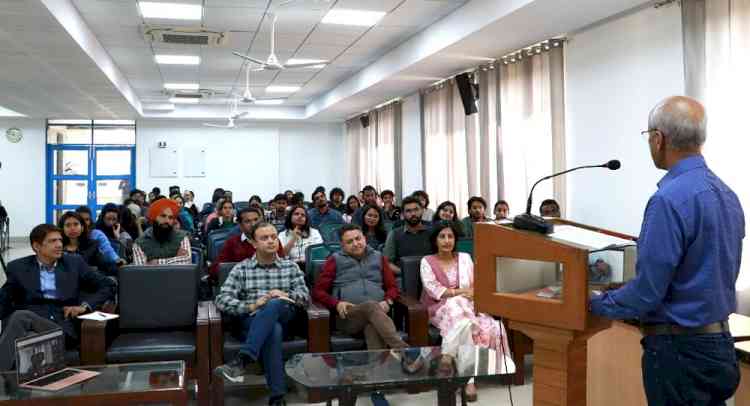Tackling ongoing challenges of online classes for school students
Attending online classes for almost a year, with the possibility of this continuing for perhaps a little while longer, has been difficult for students.

By Ashlon Noronha, Student Counsellor, Greenwood High International School
2020 has been a difficult year for everyone, students included. It is now almost a year since schools shifted over to the online platform of education in the wake of the COVID-19 pandemic. Even now, while most students long to return to the familiar environment of school, the timeline for them (particularly of primary and middle schools) to return to regular schooling is still sketchy. While humanity continues its relentless battle against this resilient virus, these young ones are fighting their own battle to remain motivated and focussed. In this article, we look at some of the ongoing challenges for students attending online classes and examine ways in which online learning can be made more interesting, comfortable, productive, and safe for students.
1. The new user-experience of attending classes online:
Because of online classes, students do not have direct access to faculty or peers to discuss and clarify academic matters. This creates a hurdle for effective learning. To make things even harder, there are other challenges that present themselves: frustrating technical issues (such as a weak internet connection), having additional responsibilities in the house, and distractions (such as the presence of other people in the house, the ubiquitous mobile phone, or easy access to other websites). All this makes it hard for students to stay focussed. The following suggestions could help them make the most of attending online classes from home:
a. Proactively interacting with faculty and peers can help students understand course expectations more clearly, learn better, and stay focussed. For this, students can take advantage of technological tools such as videoconferencing programs like Zoom, Microsoft Teams and Google Meet, or the mobile phone or emails to connect with classmates or a teacher.
b. Finding a productive workspace as well as a quiet work time at home can go a long way towards improving motivation and productivity. The study space needs to have access to a high speed internet connection. Ensuring that their devices are charged and working efficiently before class time and study time can save students a good deal of frustration. Students can reduce distractions by using a website blocker and by keeping their mobile phones switched off during classes and study time.
c. Building and maintaining an effective daily and weekly schedule (similar to the one they had during regular school) creates a sense of familiarity and accountability and also helps in planning and time-management.
d. Not everyone learns the same way. By understanding their particular learning style (such as a visual or auditory learning style), students can employ effective study strategies for themselves at home.
2. The impact of online classes on students’ physical and mental health:
As a result of classes being held online, students often spend hours in front of an electronic screen. This can cause physical and mental health issues such as headaches, eye-strain, body pain, stress and anxiety, a feeling of isolation and boredom, an inability to focus, and disturbed sleep patterns and food habits. Here are some simple, effective tips to help students take care of their health:
a. Attending online classes in a well-lit and well-ventilated room helps make the experience more comfortable. Using blue light filtering glasses can reduce the negative impact of prolonged screen time. Students can also use the short break time between online classes to wash their eyes and do basic stretching exercises. Having ergonomic furniture can help them steer clear of posture-related issues. Importantly, students need to make a conscious decision to limit their overall screen time.
b. Having nutritious and tasty meals/snacks can keep students energetic and happy. In addition to this, consuming adequate amounts of water through the day is essential to stay healthy. Sufficient and good quality sleep also goes a long way towards keeping students physically and mentally fit. Parents can help their children with this by keeping them away from anything that may keep them awake late at night.
c. Creating a healthy balance between personal time (time for oneself), study time, family time, and time for socializing is important and can contribute to one’s good health. Weekends could be kept free of school work and instead be filled with relaxing, recreational activities.
Attending online classes for almost a year, with the possibility of this continuing for perhaps a little while longer, has been difficult for students. It is important for family members and teachers to understand this predicament and continue to journey with them so that they don’t feel alone in their struggle. They need to be encouraged to stay motivated, while assuring them that schools are most likely to open up in the near future.



 cityairnews
cityairnews 








